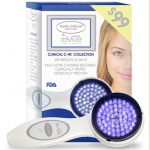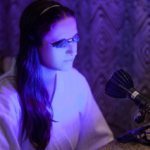
What Is Jaundice?
Jaundice is a common condition in newborn babies. It affects full term and pre-mature babies and usually occurs during the first week of a baby’s life. The condition is temporary and usually harmless but treatments still must be conducted to cure the condition.
Jaundice occurs when there is a build up of bilirubin in the baby’s blood. Bilirubin is a naturally occurring substance, but of course, too much of anything can be dangerous. This substance is an orange/red pigment in the blood. According to to the University of Michigan’s Children’s Hospital, “Bilirubin is produced by the normal breakdown of red blood cells. It is normal for everyone to have low levels of bilirubin in their blood. As bilirubin begins to build up, it deposits on the fatty tissue under the skin causing the baby’s skin and whites of the baby’s eyes to appear yellow.” (med.umich.edu)
What Causes Jaundice?
There are several causes for Jaundice. The University of Michigan’s Children’s Hospital also discussed this topic in the health and education section of their website. We have borrowed the list of causes from them…
- Physiological jaundice: This is the most common cause of newborn jaundice and occurs in more than 50% of babies. Because the baby has an immature liver, bilirubin is processed slower. The jaundice first appears at 2 to 3 days of age. It usually disappears by 1 to 2 weeks of age, and the levels of bilirubin are harmless.
- Breast-feeding jaundice: Breast-feeding jaundice may occur when your baby does not drink enough breast milk. It occurs in 5% to 10% of newborns. The jaundice symptoms are similar to those of physiological jaundice, just more pronounced. The jaundice indicates a need for help with breast-feeding.
- Breast-milk jaundice: Breast-milk jaundice occurs in 1% to 2% of breast-fed babies. It is caused by a special substance that some mothers produce in their milk. This substance causes your baby’s intestine to absorb more bilirubin back into his body than normal. This type of jaundice starts at 4 to 7 days of age. It may last 3 to 10 weeks. It is not harmful.
- Blood group incompatibility (Rh or ABO problems): If a baby and mother have different blood types, sometimes the mother produces antibodies that destroy the newborn’s red blood cells. This causes a sudden buildup of bilirubin in the baby’s blood. This serious type of jaundice usually begins during the first 24 hours of life. Rh problems formerly caused the most severe form of jaundice. However, they are now preventable if the mother is given an injection of RhoGAM within 72 hours after delivery. This prevents her from forming antibodies that might endanger other babies she has in the future
Light Therapy & Jaundice…
Phototherapy, which is a form of light therapy, is used to treat Jaundice in newborn babies. Phototherapy is the most common treatment used to reduce the high levels of bilirubin found in newborn babies.
For this treatment, a baby lies in a bassinet or an incubator, which is an enclosed plastic crib. The baby is exposed to a fluorescent light that is absorbed by the baby’s skin. Throughout this process, the bilirubin in the baby’s blood is changed into another form. This form is easily excreted in the stool and urine. The time frame for the phototherapy treatment ranges depending on the intensity of the Jaundice. Some babies require several days under the phototherapy light. WebMD, a credible website for all things medical, explain the specifics of the treatment:
“During this type of phototherapy:
- The baby is undressed so that as much of the skin as possible is exposed to the light.
- The baby’s eyes are covered to protect the nerve layer at the back of the eye (retina) from the bright light.
- Feeding should continue on a regular schedule. There is no need to stop breast-feeding.
- The bilirubin level is measured at least once a day.”
(WebMD.com/parenting)
There is also an at-home alternative for phototherapy. A fiber optic blanket or band can be wrapped around the baby and used for treatments. While fiber optic phototherapy has been proven to show results in treating Jaundice, it is not necessarily as effective or as powerful as in-hospital treatment sessions. The at-home treatment take more time to show hospital level results. This is a great option for babies with mild cases of Jaundice or babies who have no other health issues besides Jaundice. It’s important to fully understand everything related to phototherapy and Jaundice before performing treatments at home.
Phototherapy is a highly effective form of light therapy that is gaining more recognition each day. If light can save our baby’s, what else can it do?







